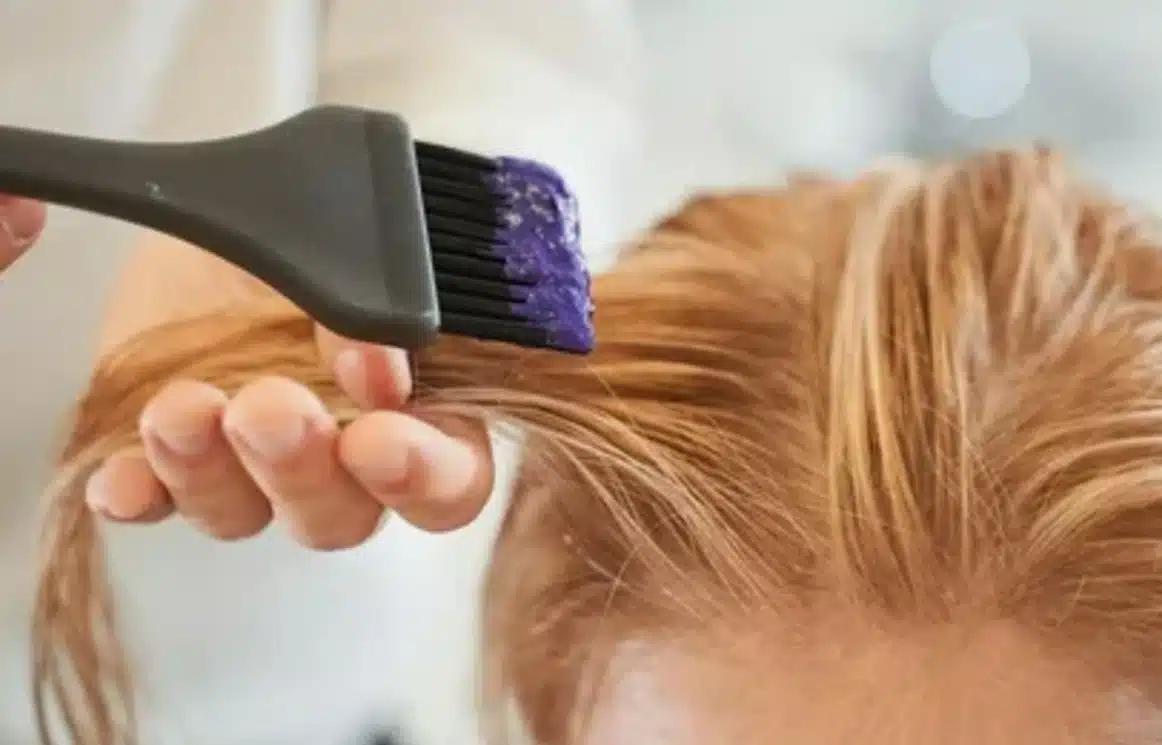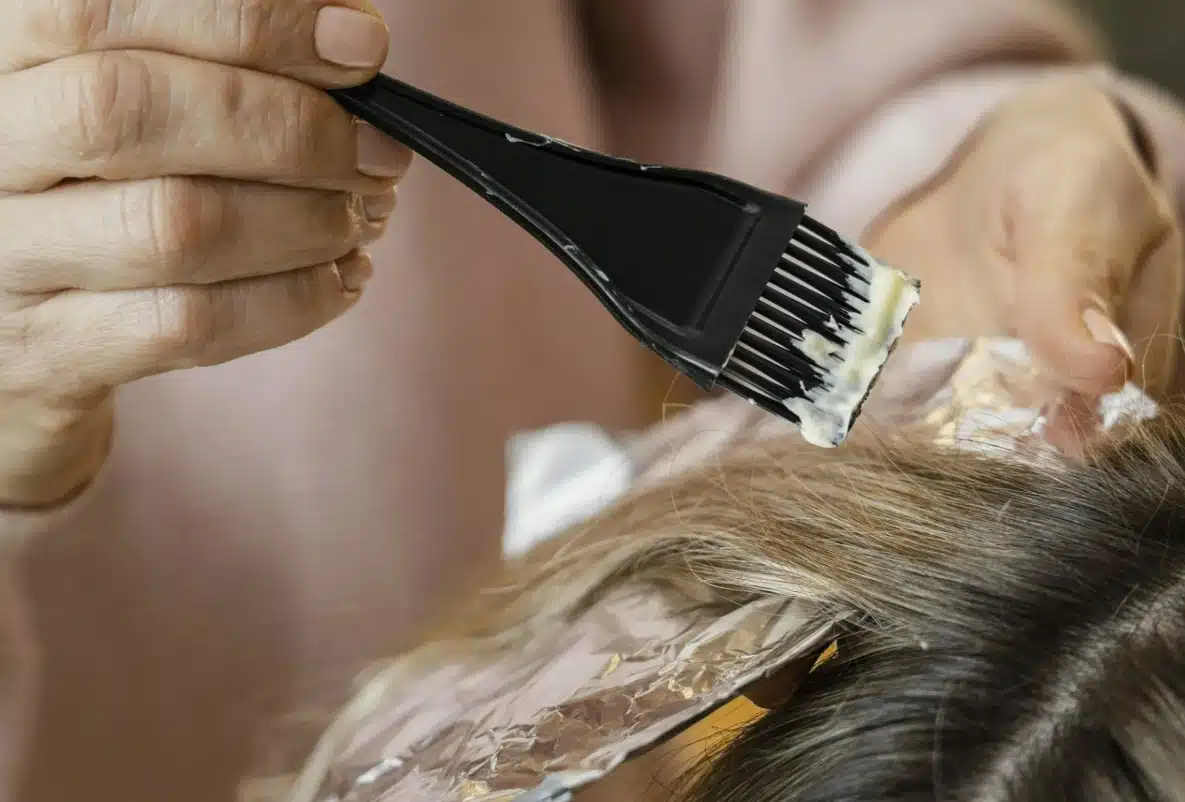
How Damaging Is Permanent Hair Dye?
Table of Contents
This article explores the potential effects of dyeing your hair and offers tips to minimize damage. Whether you’re considering changing your hair color or looking to repair damaged hair, understanding how these chemicals interact with your hair can lead to healthier choices.
Understanding Hair Dye and Color
Changing your hair color can be a fun and expressive way to change your look. But what exactly happens when you dye your hair? Hair dye works by penetrating the hair shaft to alter the natural color.
- Permanent Hair Dye: Alters the pigment within the hair shaft and doesn’t wash out.
- Semi-Permanent Hair Color: Coats the hair, providing a temporary color change.
- Demi-Permanent Hair Color: Sits between permanent and semi-permanent, lasting longer but less harsh.
Tip: Understanding these differences helps you choose the right type of dye for your needs.
What Happens When You Dye Your Hair?
When you dye your hair, you’re making a chemical interaction with the hair structure. This process changes the color of your hair and can affect its health.
- Opening the Hair Cuticle: This allows the dye to penetrate.
- Altering Pigments: The dyes change your hair’s natural pigments.
- Chemical Reaction: This can weaken the hair cuticle and structure.
Insight: The chemical disruption of human hair during dyeing can potentially weaken the hair strands.
How Does Permanent Hair Dye Affect Hair?
Using permanent hair dye can change your hair in several ways. It’s not just about the color, but also how the dye interacts with the hair structure.
Effects on Hair
- Weakening the Hair: The process of opening the hair cuticle can lead to weakness.
- Damage Over Time: Repeated use can make hair more brittle.
- Long-Term Maintenance: Your hair may need additional care to remain healthy.
Quote: “Dyeing your hair doesn’t just change the color—it alters the chemistry inside the hair.”
Can Hair Dye Cause Damage to Your Hair?
Yes, hair dyes can cause damage to your hair, particularly when not used properly.
Potential Damage
- Hair Breakage: Over time, dyeing can lead to hair breakage.
- Weakened Cuticle: The outer layer of the hair is most vulnerable.
- Brittle Hair: Chemically treated hair can become dry and brittle.
Advice: Using hair care products that strengthen hair and reduce damage can be a great way to maintain your hair’s health.
While it doesn’t directly cause hair loss, frequent dyeing can make your hair more susceptible to breakage, leading to thinning.
- Scalp Health: Irritation to the scalp can lead to hair loss.
- Stress on Hair: Frequent chemical treatments apply stress to the hair shaft.
- Hair Growth Cycle: Disruption of the growth cycle can slow down new hair growth.
Best Practices: Regular conditioning and scalp care can often prevent these issues.
Types of Hair Dye: Permanent vs. Semi-Permanent
Choosing the right type of dye is crucial for both color and hair health.
- Long-Lasting Results: Penetrates the hair shaft, altering the natural color.
- Requires Commitment: Often needs root touch-ups.
- Can Be Damaging: Opens the cuticle for color change.
Semi-Permanent Hair Dye
- Temporary Change: Washes out in several shampoos.
- Less Damaging: Doesn’t penetrate deeply.
- Natural Options Available: Less intense chemicals can mean less damage.
Decision Making: Consider how often you want to dye your hair and how much your hair can handle.
How to Repair Damaged Hair
If your hair has been affected by dyeing, there are ways to restore its health.
Repairing Strategies :
- Hydration: Use moisturizing conditioners and hair masks.
- Trimming Split Ends: Regular trims can prevent further damage.
- Protein Treatments: Strengthen the weakened hair shaft.
- Avoid Hot Tools: Let your hair recover naturally.
Expert Tip: A nourishing hair mask once a week can significantly improve hair health.
Best Practices for Hair Care
Maintaining healthy hair after dyeing involves a few best practices.
Hair Care Tips
- Gentle Shampooing: Use sulfate-free shampoos to preserve color.
- Condition Regularly: Keep hair moisturized.
- Avoid Over-Washing: Too much washing can strip hair color and moisture.
- Cool Water Rinse: Locks in moisture and keeps the hair cuticle smooth.
Insight: Consistent care leads to vibrant, healthy hair over time.
Are Professional Salon Dyes Less Damaging?
Many believe that salon dyes might be safer than at-home kits. Is this the case?
Salon Benefits
- Professional Products: Higher quality dyes can be less damaging.
- Tailored Treatment: Customized for your hair type.
- Less Frequent Application: Reduces risks of over-processing.
Conclusion: Visiting a salon can help in achieving your desired color while maintaining your hair’s integrity.
Long-Term Effects of Hair Dye
Considering the long-term implications of dyeing your hair is crucial.
Long-Term Considerations
- Gradual Weakening: Years of dyeing can weaken the hair structure.
- Color Maintenance: Permanent commitment often needs more frequent care.
- Age of Hair: Older hair may be more susceptible to damage.
Advice: Treat your hair kindly, and give it time to recover between dye sessions.
FAQs About Permanent Hair Dye
1. Does permanent hair dye damage your hair?
Yes, if used excessively, it can cause damage your hair.
2. Can I dye my hair if it’s already damaged?
It’s best to repair the damage first to prevent further weakening.
3. How do I minimize damage when dyeing my hair?
Use conditioning treatments and follow the dye manufacturer’s instructions closely.
4. Are there less damaging alternatives to permanent dyes?
Yes, semi-permanent hair color and natural dyes offer alternatives with less chemical impact.
5. Do hair dyes make hair brittle?
Over time, yes, especially if the hair is already weak or damaged.
6. How often can I dye my hair without damaging it?
Allow at least 6-8 weeks between dyeing sessions to give your hair time to recover.
Conclusion
In exploring how damaging is permanent hair dye, it’s clear that while hair dye can lead to changes in texture, strength, and health, adopting thoughtful strategies and gentle care can help minimize these effects. Whether opting for permanent hair color or choosing semi-permanent hair colors, making informed choices ensures your hair remains vibrant and healthy.
Key Takeaways
- Permanent hair dye changes your hair color by affecting the hair structure.
- Potential for Damage: Chemicals can weaken and dry out your hair.
- Alternatives: Explore less damaging options like semi-permanent hair color.
- Repair and Care: Implement a solid hair care routine post-dyeing.
- Professional Help: Salons can offer tailored solutions with professional-grade products.
Remember, vibrant and healthy hair is possible with the right care and choices. Enjoy your new color with confidence!
Bullet Point Summary
- Permanent hair dye penetrates and changes the hair’s natural pigments.
- Chemical processes can weaken the hair over time.
- Consider semi-permanent options for less damage.
- Implement hydrating and strengthening treatments regularly.
- Opt for professional salons for tailored, less damaging application.
- Regularly trim split ends to maintain hair health.
- Use sulfate-free shampoos and condition frequently.
- Alternatives include demi-permanent and natural dyes for a safer choice.
Comments

What Is Liquid Foundation Used For?
Ever wondered whether liquid foundation or powder foundation is better for your skin?

How To Sell Cosmetics On Wildberries?
Want to tap into Russia’s booming e-commerce market and expand your reach to millions of potential customers?

How Long Does Root Touch Up Spray Stay In?
Have you ever wondered how long root touch-up spray stays in your hair and its effects on your hair color?

What Chemicals Are In Root Touch Up?
Curious about what’s inside your favorite root touch-up product?

Do You Set Before Or After Setting Spray?
The world of makeup is filled with tips, tricks, and techniques to achieve a flawless, long-lasting makeup look.
- +86 151 1839 7303
- [email protected]
- Mon-Sun 07:00-23:00
Tags

How to Choose a Reliable Cosmetic OEM Manufacturer in China?
How to Pick a Good Makeup Maker in China: A Guide for You.
You possess a concept.
A new face cream. A new hair spray. A new nail color.

How to Get Hair Dye Off Skin: The Only Guide You Need
Picture this.
You just dyed your hair. You used a new color. It looks great. Your hair shines. You feel happy. You feel like a new person.

How Often Should You Wash Your Hair? The Ultimate Guide
The alarm rings.
You wake up. You stretch. You walk to the mirror.
You look at your hair.






